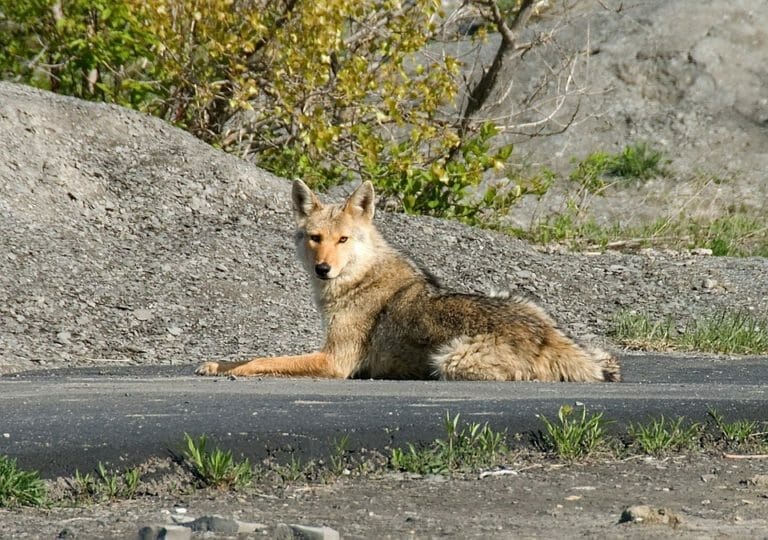Emergency Medicine, Urgent Care
How to Protect Your Dog or Cat from Coyote Attacks

The small pets that we see in our emergency departments that have suffered a coyote attack often have life-threatening injuries that require immediate surgery. Here’s information to help you protect your pet, as well as tips for how to act should you be approached by coyotes.
Understanding the Life and Habits of Coyotes
Coyotes are usually grayish-brown to yellowish-gray and often have a white or buff chest. They can vary in size from 20-50 pounds. They live in burrows and are primarily nocturnal but can be seen occasionally during daytime hours. They are increasingly being found in suburban and urban areas as development shrinks their habitats.
Coyotes are opportunistic, versatile eaters primarily feeding on small mammals (I.e., mice, rabbits, squirrels) as well as fruits, vegetables, and human trash, but they will also target small dogs and cats. They often travel in packs of six and hunt in pairs. They shift their hunting techniques depending on their prey, but they primarily stalk and pounce or run their prey into another pack member. Attacks on humans are uncommon and rarely cause significant injury, but small children are at greater risk.
How to Protect Your Dog and Cat from Coyotes
To protect your dog, cats, and family members from a coyote attack:
- Always accompany your small dog outside when it’s time for them to use the restroom, particularly at dusk, dawn, and night.
- Keep your cats inside at night.
- Supervise small children playing outside.
- Walk your dog in a well-lit area and avoid walking near the edge of the woods at night. Always carry a flashlight.
- Secure garbage cans with locking lids or store them in a garage or shed.
- Do not leave pet food sitting outside in bags or leave food in pet bowls.
- If possible, consider a six-foot fence around your yard as coyotes will be slowed by needing to climb the fence. Dog doors and electric fences are wonderful but offer no protection from predators.
What to Do if You Are Approached by a Single Coyote
- Maintain eye contact while slowly backing away. Never turn your back on the coyote.
- If you are with a small child, place them behind you as you back away, and do not allow the child to run away from you.
- Do not look afraid or scared as they can read your body language and interpret it as submissive.
- Make yourself look as large and imposing as possible by raising your arms above your head.
- Shout or yell to frighten the coyote.
- Throw sticks or rocks to scare the coyote away.
- Shine a flashlight into their eyes if it’s nighttime.
- Know there is likely another coyote close by, so be alert.
What to Do if You Are Approached by a Pack of Coyotes
- Do not act in a threatening manner or stare into their eyes. Note this is different than if you are approached by a single coyote.
- Shout or yell to frighten the coyotes.
- Throw sticks or rocks to scare them away.
We hope these tips keep your family and pets safe from coyotes. However, if your dog or cat is attacked by a coyote, reach out to your family veterinarian right away or take your pet to the MedVet location closest to you.